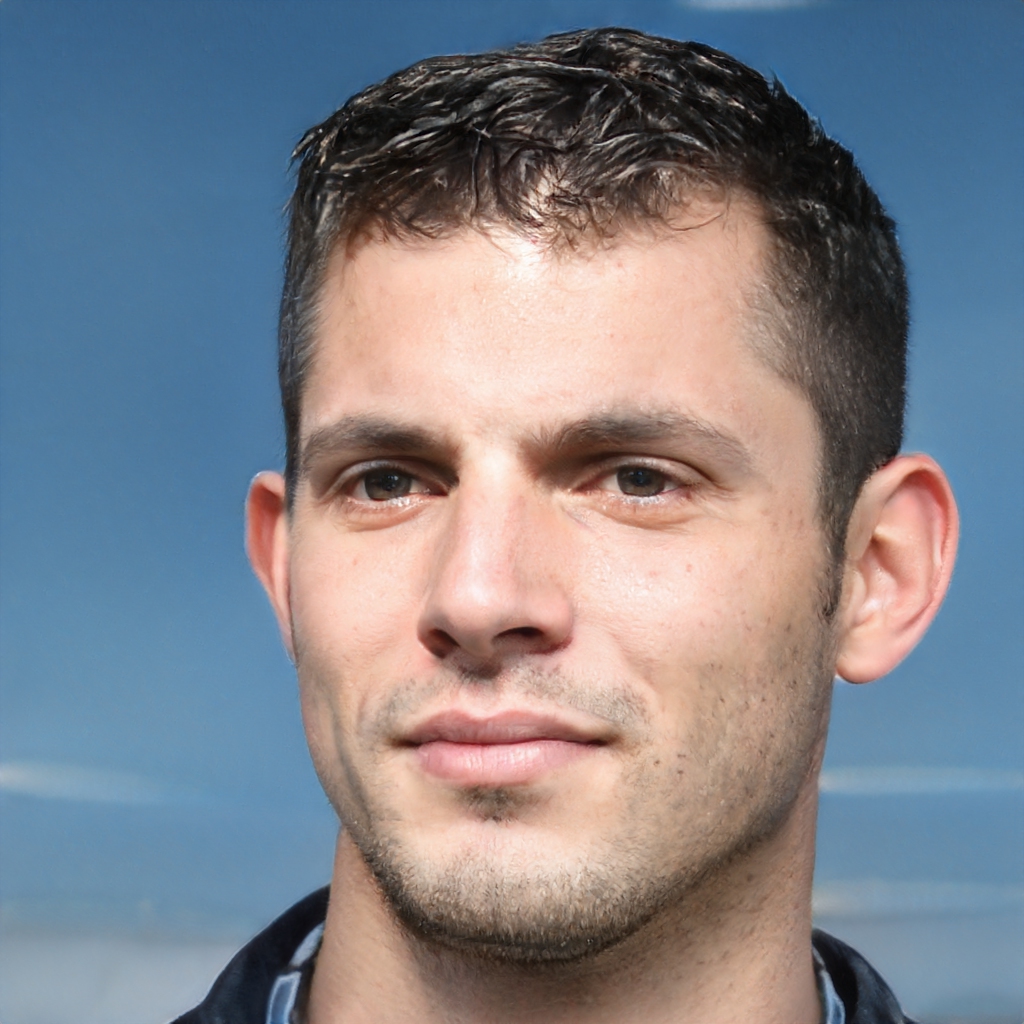What Are The Various Forms Of Aerokinesis And How Do They Differ?
Aerokinesis, the ability to control and manipulate the air around us, has long been a topic of fascination and curiosity. Many people believe that harnessing this power could lead to incredible feats of strength and agility, but few consider the potential dangers that come with uncontrolled aerokinesis. Read on to learn in detail.
Author:Evelyn AdamsReviewer:Calvin PenwellJan 05, 202448.4K Shares1.1M Views

Aerokinesis, the ability to control and manipulate the air around us, has long been a topic of fascination and curiosity. Many people believe that harnessing this power could lead to incredible feats of strength and agility, but few consider the potential dangers that come with uncontrolled aerokinesis. Read on to learn in detail.
The Different Forms Of Aerokinesis
Aerokinesis can take many different forms, depending on the intentions and abilities of the practitioner. Some forms of aerokinesis focus on manipulating the wind or air currents, while others focus on creating or controlling rain or other forms of precipitation.
One common form of aerokinesis is known as telekinesis, which involves using the power of the mind to move objects using the movement of air particles. Another form of aerokinesis is known as aeromancy, which involves using the patterns and movements of the wind to gain insight into the future or to communicate with spirits.
Aerokinetic abilities can also be used for healing purposes. Some practitioners of alternative medicine believe that the movement of air particles can be used to balance the body's energy and promote healing. This is known as aerokinetic healing.
Understanding The Role Of Energy In Aerokinesis
To understand the role of energy in aerokinesis, it's important to first recognize that everything in the universe is made up of energy. This includes the air around us and the particles that make it up.
Aerokinesis is the ability to manipulate the air and wind using the energy within oneself. Practitioners of aerokinesis believe that by focusing their energy and intention, they can create changes in the air around them.
One way to conceptualize this process is to think about the flow of energy in the body. In many Eastern spiritual traditions, this flow is referred to as "chi" or "prana." This energy flows through channels in the body known as meridians or nadis and can be harnessed and directed for various purposes, including aerokinesis.
Aerokinetic practitioners often engage in specific breathing exercises and meditation techniques to enhance their energy flow and focus their intention on manipulating the air around them.
By doing so, they believe they can create changes in air pressure, temperature, and movement. However, it's important to note that there is currently no scientific evidence to support the existence of aerokinesis or the concept of chi or prana.
The Potential Dangers Of Uncontrolled Aerokinesis
While the ability to control the air around us may seem like a fun and harmless skill, it is important to remember that there can be potential dangers associated with uncontrolled aerokinesis. If a person is unable to control their abilities, they may unintentionally cause harm to themselves or others.
For example, strong gusts of wind could knock over objects or even people, causing injury or damage. In extreme cases, uncontrolled aerokinesis could even cause natural disasters such as tornadoes or hurricanes, which could have devastating consequences for entire communities.
It is important, therefore, that anyone interested in developing their aerokinetic abilities takes the time to practice and develop their skills in a controlled and safe environment. They should also seek the guidance of a trained mentor or teacher who can help them to develop their abilities safely and responsibly.
The Link Between Meditation And Aerokinetic Control
Meditation is a practice that has been used for thousands of years to enhance mental and physical well-being. It involves training the mind to focus on a specific object or idea, often through controlled breathing and relaxation techniques. Meditation has also been linked to the development of certain paranormal abilities, including aerokinesis.
One reason why meditation may help develop aerokinetic abilities is that it can help practitioners become more attuned to their energy and intention. By focusing on the breath and quieting the mind, meditators may be better able to sense and manipulate the energy around them.
In addition, meditation can also help practitioners develop greater control over their thoughts and emotions. This can be helpful when attempting to manipulate the air around them, as negative or distracted thoughts can interfere with the process.
By cultivating a calm and focused mind through meditation, practitioners may be able to harness their energy and direct it toward their intended goal.
The Cultural And Spiritual Significance Of Aerokinesis
Aerokinesis is not only a paranormal ability but also has cultural and spiritual significance in many traditions around the world. For example, in Hinduism, the god Vayu is associated with the wind and is said to control the movement of air. Similarly, in many Native American traditions, the wind is seen as a powerful spiritual force that can be called upon for guidance and protection.
Some practitioners of aerokinesis view their ability as a form of spiritual connection to the natural world. By manipulating the air and wind, they believe they are tapping into the energy and power of the natural environment. Others see their ability as a way to connect with higher spiritual forces or dimensions.
In addition, aerokinesis has also been associated with certain cultural practices, such as the use of wind instruments in music and the creation of wind-based art. These practices reflect a deep appreciation for the power and beauty of the wind and air and demonstrate the cultural significance of aerokinesis beyond its paranormal claims.

Aerokinesis MEGA BLAST (Leaf Tornadoes)
The Connection Between Aerokinesis And Weather Manipulation
One of the most controversial and hotly debated aspects of aerokinesis is its potential to manipulate weather patterns. Some practitioners claim that they can use their abilities to create or control weather events such as windstorms, tornadoes, and hurricanes.
However, there is little to no scientific evidence to support these claims. The scientific community largely believes that weather patterns are complex and influenced by many factors, including temperature, humidity, pressure, and geography.
While some practitioners may be able to sense or predict changes in weather patterns, the idea that they can control or manipulate these patterns using their energy and intention remains unproven.
However, there is some evidence to suggest that climate change may be affecting weather patterns in ways that are not yet fully understood. As such, it's possible that further research in the area of aerokinesis and weather manipulation could yield new insights into the relationship between human activity and the natural environment.
The Role Of Breathwork In Aerokinesis
Breathwork is a technique that involves controlling the breath to influence the body and mind. Many practitioners of aerokinesis believe that breathwork is a key component of developing their abilities. By focusing on their breath, they can regulate their energy and intention, and direct it towards manipulating the air and wind.
There are many different types of breathwork techniques, ranging from simple deep breathing exercises to more complex pranayama practices used in yoga. However, the basic principle behind all breathwork is the same - by controlling the breath, we can influence our physical and mental state.
Some practitioners of aerokinesis use breathwork in combination with other techniques, such as meditation and visualization, to enhance their abilities. By controlling their breath and focusing their intention, they can direct their energy towards manipulating the air and wind in specific ways.
How Aerokinesis Differs From Telekinesis
Aerokinesis and telekinesis are both abilities that involve the manipulation of energy and matter using the power of the mind. While these two abilities may seem similar at first glance, there are some key differences between them.
Telekinesis, as its name suggests, involves the ability to move objects using the power of the mind. This can include moving physical objects, such as a pencil or a book, or even manipulating energy fields, such as moving a stream of water or bending a flame.
Aerokinesis, on the other hand, specifically involves the manipulation of air particles and air currents. This can include the ability to create wind or to control the movement of air around an object.
One of the main differences between telekinesis and aerokinesis is the way that they are practiced. Telekinesis often involves a more direct and forceful approach, with practitioners focusing their mental energy on moving physical objects.
Aerokinesis, on the other hand, often involves a more subtle and nuanced approach. Practitioners of aerokinesis may focus on creating small changes in the movement of air particles, gradually building up their ability to control larger movements and air currents.
Another key difference between these two abilities is the level of scientific understanding and acceptance of each. While telekinesis is often considered a fringe or pseudoscientific concept, there is more scientific evidence to support the idea that the movement of air particles can be influenced by mental intention and focus.
People Also Ask
What Are The Benefits Of Practicing Aerokinesis?
Aerokinesis can potentially be used for energy production, weather prediction, and even transportation.
Are There Any Scientific Studies Or Evidence To Support The Concept Of Aerokinesis?
While there is limited scientific evidence, some studies suggest that the movement of air particles can be influenced by mental intention and focus.
How Can One Start Practicing Aerokinesis?
One can start by learning breathing techniques and visualization exercises to develop their ability to control air particles.
Conclusion
While the idea of controlling the air around us may seem exciting, it's crucial to understand the potential dangers of uncontrolled aerokinesis. From unintentional harm to oneself or others to destructive weather patterns, the risks of this power should not be taken lightly.
With proper training and control, however, aerokinesis can be a powerful tool for good. It's up to those who possess this ability to use it responsibly and with caution to prevent any unwanted consequences.
Jump to
The Different Forms Of Aerokinesis
Understanding The Role Of Energy In Aerokinesis
The Potential Dangers Of Uncontrolled Aerokinesis
The Link Between Meditation And Aerokinetic Control
The Cultural And Spiritual Significance Of Aerokinesis
The Connection Between Aerokinesis And Weather Manipulation
The Role Of Breathwork In Aerokinesis
How Aerokinesis Differs From Telekinesis
People Also Ask
Conclusion

Evelyn Adams
Author
Evelyn Adams is a dedicated writer at Kansas Press, with a passion for exploring the mystical and uncovering hidden meanings.
Evelyn brings a wealth of knowledge and expertise to her insightful articles. Her work reflects a commitment to providing accurate information, thoughtful analyses, and engaging narratives that empower readers to delve into the mysteries of the universe.
Through her contributions, Evelyn aims to inspire curiosity, spark imagination, and foster a deeper understanding of the supernatural world.

Calvin Penwell
Reviewer
Since diving into numerology in 1997, my path has been marked by extraordinary encounters and insights. A pivotal moment was uncovering a forgotten numerological manuscript in a tucked-away Italian library, which deepened my connection to the ancient wisdom of numbers. Another transformative experience was a meditation retreat in Nepal's tranquil mountains, where I honed my intuition and the art of interpreting numerical vibrations.
These adventures have not only enriched my numerological practice but also my ability to guide others towards understanding their destiny and life's purpose. My approach is deeply personal, rooted in a blend of historical knowledge and intuitive insight, aimed at helping individuals find their alignment with the universe's abundant energies. My mission is simple: to share the power of numerology in illuminating paths to abundance and fulfillment.
Latest Articles
Popular Articles
